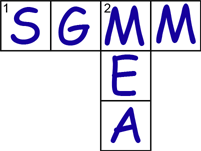
|
Small Group Mathematical Modeling (SGMM)Integrating more engineering contexts, introducing advanced engineering topics, addressing multiple ABET Criteria, and serving under-represented student populations in foundation engineering courses are some of the opportunities realized by the use of this framework for developing real-world client-driven problems. |
Citations
- Zawojewski, J. S., Diefes-Dux, H., & Bowman, K. (Eds.) (in press). Models and Modeling in Engineering Education: Designing Experiences for All Students. Rotterdam, the Netherlands: Sense Publishers.
- Verleger, M., Diefes-Dux, H. (2008) �Impact of Feedback and Revision on Student Team Solutions to Model-Eliciting Activities�. ASEE National Conference Proceedings, Pittsburgh, PA.
- Diefes-Dux, H., Zawojewski, J., Verleger, M., Moore, T., and Oware, E. (2006) �Guided Peer Feedback for Improved Student Team Responses to Open-Ended Engineering Problems�. Frontiers in Education (FIE) Conference, San Diego, CA.
- Diefes-Dux, H.A., Hjalmarson, M., Zawojewski, J., and Bowman, K. (2006). "Quantifying Aluminum Crystal Size Part 1: The Model-Eliciting Activity," Journal of STEM Education: Innovations and Research, 7(1&2):51-63.
- Hjalmarson, M., Diefes-Dux, H.A., Bowman, K., and Zawojewski, J. (2006). "Quantifying Aluminum Crystal Size Part 2: The Model-Development Sequence" Journal of STEM Education: Innovations and Research, 7(1&2):64-73.
- Moore, T., Diefes-Dux, H.A., and Imbrie, P.K. (2006). "Assessment of Team Effectiveness During Complex Mathematical Modeling Tasks," Frontiers in Education Conference, San Diego, CA.
- Moore, T. and Diefes-Dux, H.A. (2004). "Developing Model-Eliciting Activities for Undergraduate Students Based on Advanced Engineering Content," Frontiers in Education Conference, Savannah, GA.
